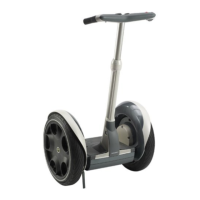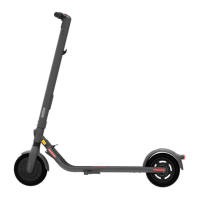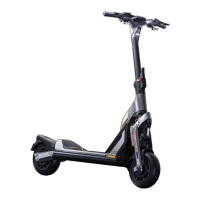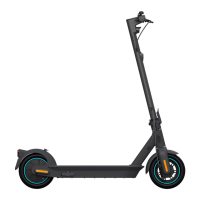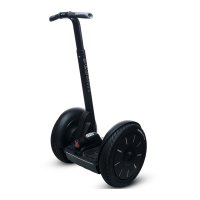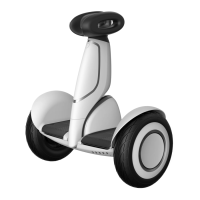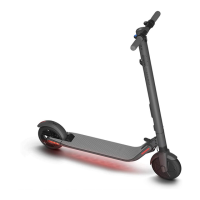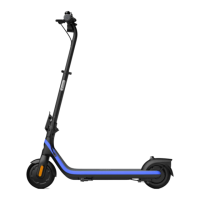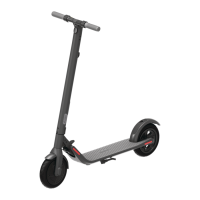Basic Rider Optimization Training for the Segway HT Page 51 of 106
Instructor Guide and Participant Workbook Rev 3.5i - January 2004
© Segway LLC 2002 P/N 1707100001aa
The motor for each wheel (right/left) is connected to the front and rear drive systems. This allows
either the front or the rear drive system to produce torque to the motor shaft. The system uses
independent controllers for the front and rear drive systems. Like the Battery Packs, the
redundant capability ensures functionality in the unlikely case of a module failure.
> Battery Packs
The Battery Packs in the HT are sealed units that require no maintenance besides proper
charging. There is a front Battery Pack and a rear Battery Pack. The Battery Packs are
interchangeable. The Segway HT will be brought to a stop safely using just one Battery Pack
should a problem occur in the other Battery Pack. The Battery Packs are utilized so that they
provide the highest possible range while maintaining the appropriate capability to handle any
system issues. You should always replace the Battery Packs in pairs.
> Balance Sensor Assembly (BSA)
There are five gyroscopes (rate sensors) and two tilt sensors in the BSA. They gather information
about the orientation of the Platform in all three planes (pitch, roll and yaw.) It is this information
that is used to determine Segway HT behaviors resulting in moving the wheels under the Platform
to maintain balance.
In Balance Mode, all five rate sensors (gyros) are actively being used. They are constantly
checking each other to ensure each is operating correctly. If one of the five rate sensors fails, a
Safety Shutdown will occur. Additionally the two tilt sensors are checking each other in a similar
manner.
> Systems in the Handlebar
There are redundant communication systems in the Handlebar, each backing up the Steering
Grip and the Mode Button. If there is a malfunction in either the Steering Grip or the Mode Button,
the Segway HT will perform a Safety Shutdown. Each system in the Handlebar independently
communicates information to the Controller Boards in the power base via an individual Control
Shaft cable. If either cable has a malfunction, the Segway HT will perform a Safety Shutdown
(See “Safety Shutdown” on page 58).
Operator Responsibilities
The HT will reduce available speed of the Segway HT when its capabilities are reduced. If a critical
system malfunctions, the HT performs a Safety Shutdown (see description below).
Say: “For your safety and the safety of those around you, it is important that you be able to recognize
all safety critical alerts and behaviors on the Segway HT, and to respond properly.”
• You, the operator, determine where the Segway HT will be used, and how it will be used. Always
exercise awareness, know your capabilities, and respond to Segway HT alerts and behaviors.
• Walking is easy and safe, within your capabilities, but how many people have inadvertently
walked into a parking meter, slipped on a slippery driveway, twisted their ankles on a curb or
tripped going down the stairs?
• You must use good judgment!
The Segway HT has a depth of utility that you will have to become adept at mastering, just like driving
a car in heavy traffic.
Say: “It’s easy to use, but nothing is obvious to the uninformed”
Response Hierarchy
Draw the following headings (Normal Operation, Reduced Performance, Safety Shutdown) on the
white board:

